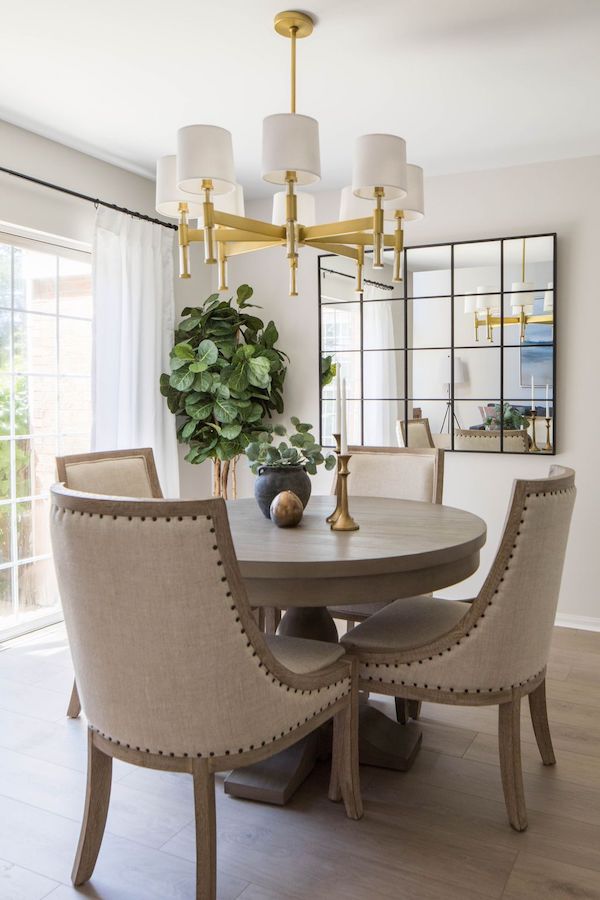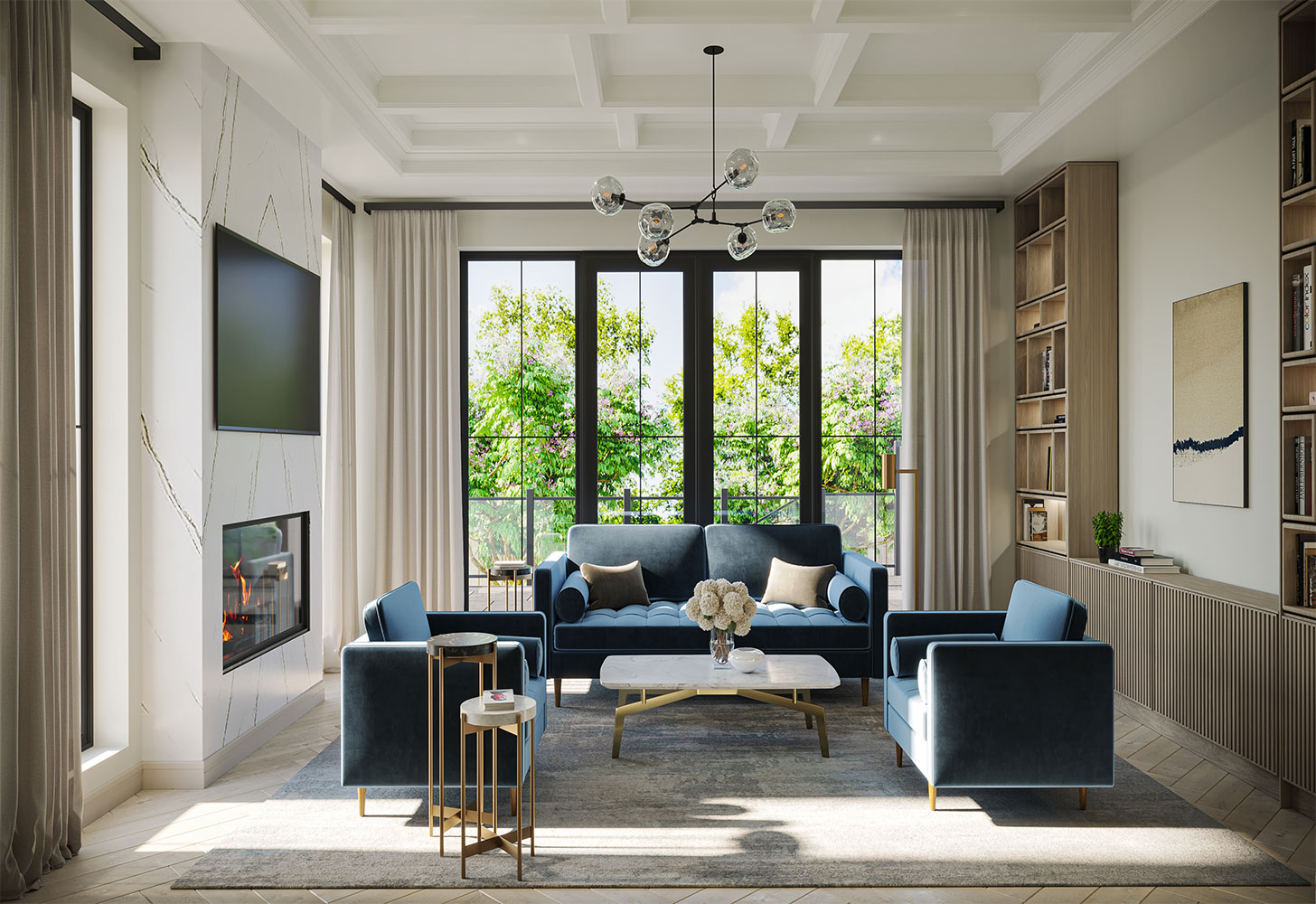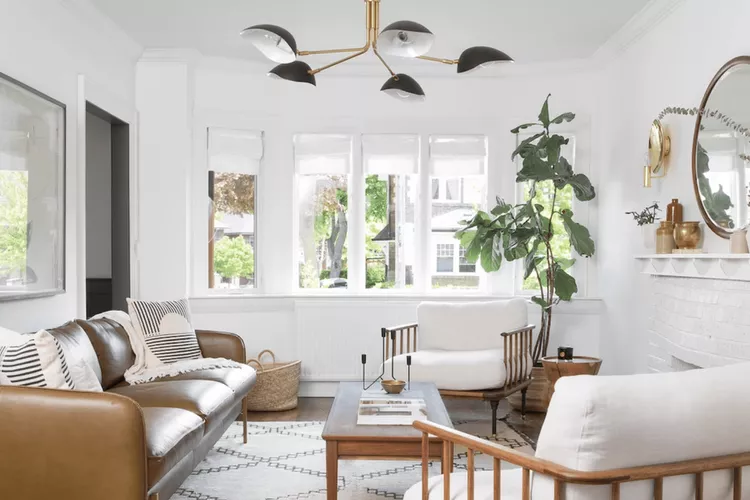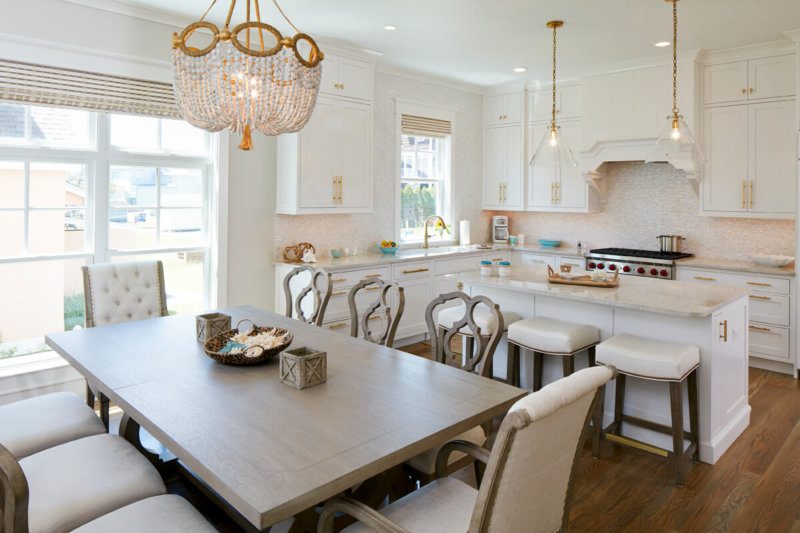Mixing traditional and modern decor invites an eclectic fusion of styles that can breathe unique life into a living space. This approach to interior design harmonizes the warm, classic feel of traditional furniture with the sleek, minimalist appeal of modern pieces. The blend creates an environment that is both timeless and contemporary, offering a versatile aesthetic that appeals to diverse tastes. Key to successfully merging these two styles is finding a balance where each piece, whether antique or cutting-edge, complements the other to craft a cohesive look.

To achieve this synergy, one must carefully consider elements such as color, texture, scale, and proportion. Traditional furniture often features ornate detailing and rich fabrics, while modern designs tend toward the simple and use of materials like metal and glass. By selecting pieces that share a common element, such as a color scheme or material, they can seamlessly integrate with one another. For instance, a sleek modern sofa can be paired with a classic wooden coffee table, while traditional lamps can illuminate a clean-lined modern desk. The contrast of lines and forms can make each piece stand out while still contributing to a harmonious interior.
Incorporating both design philosophies into a space also allows for a personal touch, as homeowners can blend family heirlooms and new acquisitions that reflect their own style. It’s a thoughtful design approach that acknowledges the past’s craftsmanship and embraces the innovative simplicity of the present. Whether one lives in an ultra-modern loft or a historic home, mixing traditional and modern furniture opens up a world of creative possibilities that can make a home distinctly personal and inviting.
The Philosophy of Blending Styles

Source: Archizy
Blending traditional and modern decor hinges on the understanding of each style’s characteristics and how they can complement each other.
Defining Traditional Decor
Traditional decor refers to a classic style with a timeless quality. It often includes ornate details, rich color palettes, and substantial, dark wood furniture. Symmetry is valued, and fabrics are typically patterned and plush.
Defining Modern Decor
Modern decor, on the other hand, champions minimalism and function. Furniture in this style is noted for its sleek lines, neutral colors, and the use of materials like metal, glass, and smooth wood. It prioritizes space, light, and a sense of simplicity.
Principles of Design Harmony
- Balance: To achieve a cohesive look, balance is crucial. One can mix a heavy traditional piece with modern accessories or pair a modern table with traditional chairs. The goal is to prevent one style from overwhelming the other.
- Scale and Proportion: It’s important to pay attention to the scale and proportion of the furniture. A large traditional sofa can be complemented with sleek, modern chairs, provided they are not too small or large in relation to each other.
- Color Palette: A harmonious color palette can unify the styles. Utilizing a consistent range of colors or keeping to a monochromatic scheme helps integrate traditional and modern pieces.
- Texture and Materials: By mixing textures and materials, such as placing a modern glass table atop a traditional ornate rug, one adds depth and interest to the space.
By understanding and applying these principles, one can mix traditional and modern decor successfully, creating a harmonious and personalized space.
Planning Your Space

Source: Cachet Homes
When mixing traditional and modern decor, one’s attention to room layout and furniture placement can make a significant impact. The process requires thoughtful consideration of how the space will be used and the visual harmony of different pieces.
Analyzing Room Functionality
To ensure that a room meets its intended purpose, one must assess its functionality. This involves considering the activities that will take place and selecting appropriate furnishings. A table summarizing the function and corresponding furniture pieces can provide clarity:
| Room Function | Furniture Selection |
|---|---|
| Socializing | Comfortable seating, conversation-friendly arrangement |
| Dining | Table and chairs with ample space for movement |
| Working | Desk with task lighting, ergonomic chair |
Creating a Focal Point
Establishing a focal point is vital in a mixed-style space. It anchors the room and draws attention. This could be a large piece of furniture, an artwork, or an architectural feature. Bold colors or distinct textures can emphasize the focal point, as shown in the following examples:
- Sculptural modern light fixture above a traditional wooden table
- Large, colorful abstract painting on a wall with classic wainscoting
Balancing Proportions
Attention must be paid to the scale and proportion of pieces to create a cohesive look. The balance between large and small items, or between ornate traditional elements and sleek modern designs, is key. Furniture ratios can be outlined in a simple list:
- Large sofa (modern): pair with smaller, traditional side chairs
- Antique bureau (traditional): balance with a minimalist modern lamp
- Vintage rug (traditional): complement with a modern coffee table with clean lines
Selecting Furniture

Source: Cozy Italian Sofas
When mixing traditional and modern decor, selecting the right furniture is pivotal. It requires an eye for design unity while embracing contrast.
Identifying Statement Pieces
Statement pieces are the anchors of a room, often showcasing traditional craftsmanship or modern innovation. They should carry intrinsic aesthetic value and serve as focal points. Examples include:
- Traditional: Ornate wooden tables or antique armoires
- Modern: Minimalist sculptures or vibrant, abstract art pieces
Choosing Transitional Pieces
Transitional pieces blend elements from both traditional and modern designs. They function as a design bridge, making it easier to integrate diverse styles. Characteristics to look for are:
- Simplicity: Clean lines with subtle details
- Material: Use of wood with metal accents or glass
Mixing and Matching Styles
To mix and match styles effectively, one must balance scale, texture, and color palette.
Do:
- Pair a sleek, modern sofa with an ornate, traditional coffee table
- Use a consistent color scheme to unify pieces from different eras
Don’t:
- Clutter the space with too many varying styles
- Ignore the proportions and scale of the furniture pieces
Color and Texture Considerations

Source: Jaipur Rugs
Color and texture are vital elements that balance traditional and modern decor. Selecting complementary color schemes and incorporating texture variation can create visual interest and aesthetic harmony.
Complementary Color Schemes
Complementary color schemes involve the use of colors across from each other on the color wheel to create a balanced look. For a traditional space, one might choose rich, deep hues like burgundy or navy. Modern decor often features neutral tones, such as grays and whites. Combining these elements requires a thoughtful approach to ensure the palette feels cohesive.
- Traditional Colors: Burgundy, Navy, Forest Green
- Modern Colors: Gray, White, Beige
Example: A navy traditional sofa paired with beige modern chairs.
Texture Variation for Depth
Texture variation is the key to giving a space depth and tactile interest, preventing the decor from appearing flat. Traditional furniture often has ornate textures like tufting or quilting, while modern pieces tend to have smoother, clean lines.
- Traditional Textures: Tufted Upholstery, Quilting
- Modern Textures: Smooth Leather, Polished Metals
Example: A quilted traditional armchair alongside a sleek modern metal coffee table.
Accessorizing the Room

Source: Interiors By Joan
When blending traditional and modern decor, the accessories chosen can bridge the gap between styles, unifying the space.
Strategic Accessory Selection
Certain accessories have the power to anchor a room’s decor, providing a visual equilibrium between varied elements. For instance, a vintage rug can complement modern furniture by adding warmth and texture. In contrast, metallic accents like brass or chrome can lend a modern edge to a space with predominantly traditional furniture. Here are some specific accessories to consider:
- Throw pillows: Mix patterns with solid colors to balance the look.
- Lighting: A contemporary lamp on an antique desk merges two eras seamlessly.
Art and Decorative Objects
Carefully chosen art and decorative objects can act as conversation starters and visual focal points. An abstract painting can add a dash of modernism above a traditional sideboard. Meanwhile, sculptures or pottery in classic forms can introduce an element of timelessness to a modern setting. A strategic approach to incorporating these elements might involve:
- Wall art: Displaying modern pieces above traditional furniture.
- Shelving: Placing traditional decorative objects on minimalist shelves.
Lighting the Space

Source: The Spruce
Careful selection and placement of lighting can seamlessly blend traditional and modern styles in a cohesive design.
Layering Light for Ambiance
Incorporating multiple layers of lighting enhances the ambiance and functionality of a space. A combination of overhead, task and accent lighting creates a warm and inviting environment.
- Overhead Lighting: Chandeliers with classic design elements add elegance while providing general illumination.
- Task Lighting: Modern floor or desk lamps offer focused lighting for reading and other activities.
- Accent Lighting: Wall sconces or picture lights highlight traditional art pieces or architectural details.
Statement Lighting Fixtures
Statement fixtures serve as a focal point and can bridge the gap between traditional and modern aesthetics.
- Chandeliers and Pendants: Choose fixtures with bold lines and geometric shapes to add a contemporary touch to your space.
- Wall Fixtures: Wall lights with metal finishes or innovative designs can complement both decor styles.
Carefully selected statement lighting can enliven a room by drawing attention while still harmonizing with both traditional and modern elements.

Source: Marnie Homes
